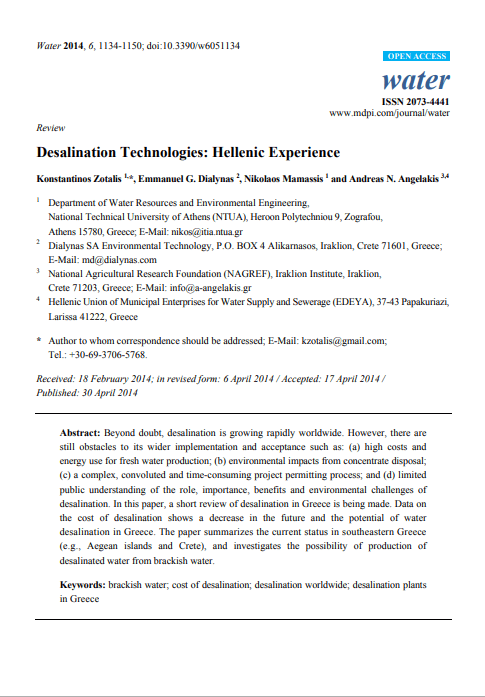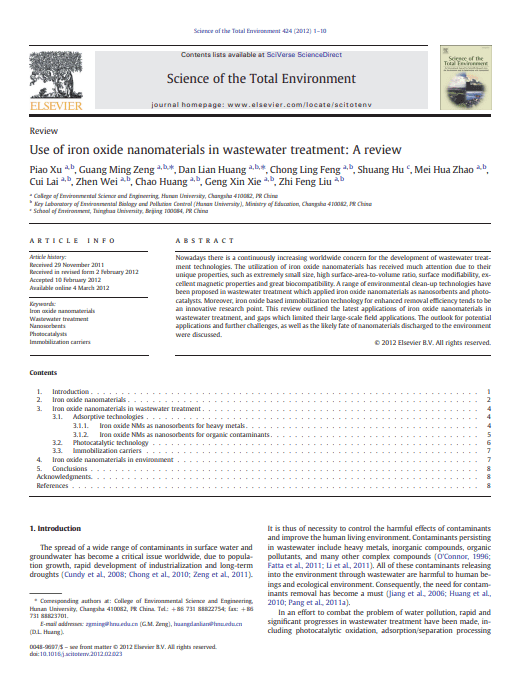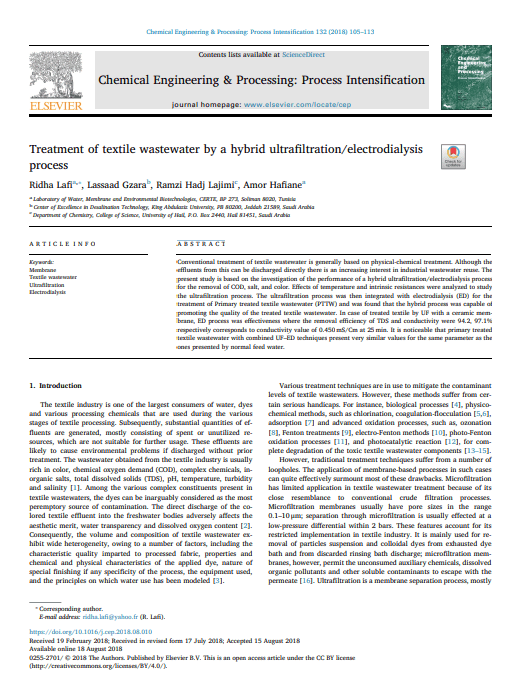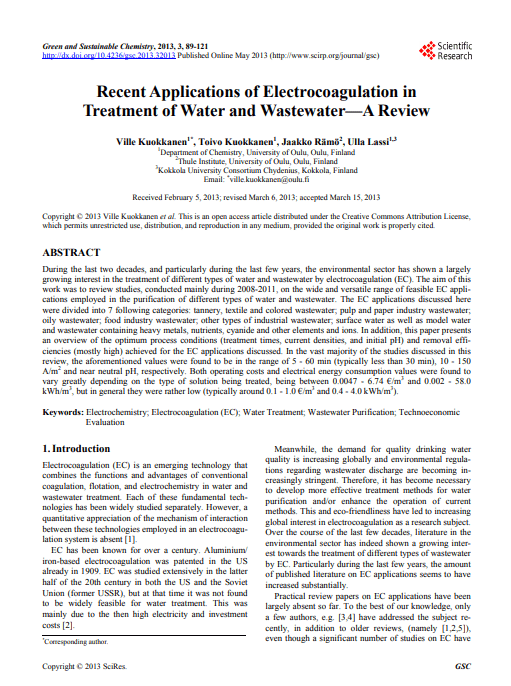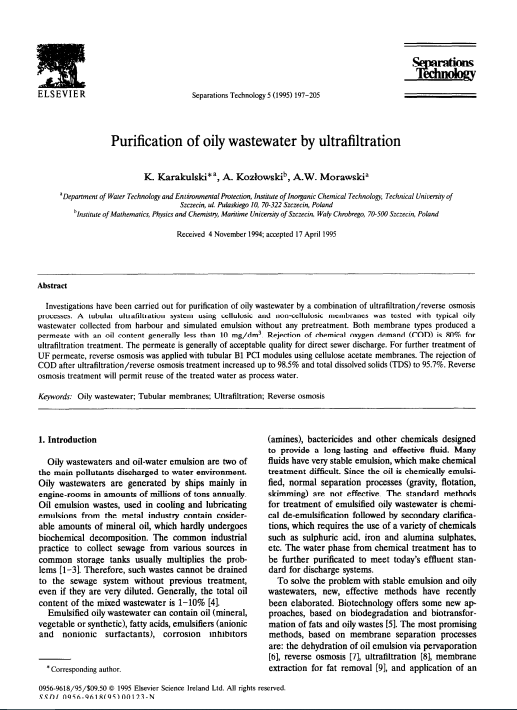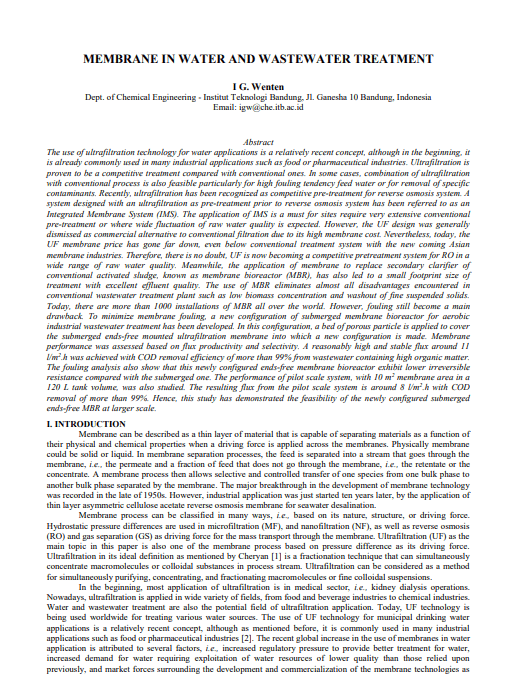Dewatering Effect on Virtual Settlement of Pile Foundation
Abstract
In this research, a simplified procedure may be adopted to calculate the foundation settlement resulting from the use of the dewatering system, which is Required to lower the water table level to dry condition during construction.
A case study of a vehicle that was adopted at a specific site in the city of Baghdad, and the analysis was calculated for two types of piles, both of which were immersed in water.
Dewatering Effect on Virtual Settlement of Pile Foundation
Abstract
In this research, a simplified procedure may be adopted to calculate the foundation settlement resulting from the use of the dewatering system, which is Required to lower the water table level to dry condition during construction.
A case study of a vehicle that was adopted at a specific site in the city of Baghdad, and the analysis was calculated for two types of piles, both of which were immersed in water.
Desalination Technologies
Introduction
In this paper, a short review of desalination in Greece is made. Data on the cost of desalination shows a future decline and the potential for desalination in Greece.
The paper summarizes the current situation in southeastern Greece (eg, the Aegean Islands and Crete), and investigated the possibility of producing desalinated water from brackish water.
Desalination Technologies
Introduction
In this paper, a short review of desalination in Greece is made. Data on the cost of desalination shows a future decline and the potential for desalination in Greece.
The paper summarizes the current situation in southeastern Greece (eg, the Aegean Islands and Crete), and investigated the possibility of producing desalinated water from brackish water.
Use of Iron Oxide Nanomaterials in Wastewater Treatment
Abstract
Nowadays there is a continuously increasing worldwide concern for the development of wastewater treatment technologies. The utilization of iron oxide nanomaterials has received much attention due to their
unique properties, such as extremely small size, high surface-area-to-volume ratio, surface modifiability, excellent magnetic properties and great biocompatibility. A range of environmental clean-up technologies have
been proposed in wastewater treatment which applied iron oxide nanomaterials as nanosorbents and photocatalysts. Moreover, iron oxide based immobilization technology for enhanced removal efficiency tends to be
an innovative research point. This review outlined the latest applications of iron oxide nanomaterials in
wastewater treatment, and gaps which limited their large-scale field applications. The outlook for potential
applications and further challenges, as well as the likely fate of nanomaterials discharged to the environment
were discussed.
Use of Iron Oxide Nanomaterials in Wastewater Treatment
Abstract
Nowadays there is a continuously increasing worldwide concern for the development of wastewater treatment technologies. The utilization of iron oxide nanomaterials has received much attention due to their
unique properties, such as extremely small size, high surface-area-to-volume ratio, surface modifiability, excellent magnetic properties and great biocompatibility. A range of environmental clean-up technologies have
been proposed in wastewater treatment which applied iron oxide nanomaterials as nanosorbents and photocatalysts. Moreover, iron oxide based immobilization technology for enhanced removal efficiency tends to be
an innovative research point. This review outlined the latest applications of iron oxide nanomaterials in
wastewater treatment, and gaps which limited their large-scale field applications. The outlook for potential
applications and further challenges, as well as the likely fate of nanomaterials discharged to the environment
were discussed.
Treatment of Textile Wastewater by a Hybrid Ultrafiltration Electrodialysis Process
ABSTRACT
Conventional treatment of textile wastewater is generally based on physical-chemical treatment. Although the effluents from this can be discharged directly there is an increasing interest in industrial wastewater reuse. The present study is based on the investigation of the performance of a hybrid ultrafiltration/electrodialysis process for the removal of COD, salt, and color. Effects of temperature and intrinsic resistances were analyzed to study the ultrafiltration process. The ultrafiltration process was then integrated with electrodialysis (ED) for the treatment of Primary treated textile wastewater (PTTW) and was found that the hybrid process was capable of promoting the quality of the treated textile wastewater. In case of treated textile by UF with a ceramic mem[1]brane, ED process was effectiveness where the removal efficiency of TDS and conductivity were 94.2, 97.1% respectively corresponds to conductivity value of 0.450 mS/Cm at 25 min. It is noticeable that primary treated textile wastewater with combined UF–ED techniques present very similar values for the same parameter as the ones presented by normal feed water.
Treatment of Textile Wastewater by a Hybrid Ultrafiltration Electrodialysis Process
ABSTRACT
Conventional treatment of textile wastewater is generally based on physical-chemical treatment. Although the effluents from this can be discharged directly there is an increasing interest in industrial wastewater reuse. The present study is based on the investigation of the performance of a hybrid ultrafiltration/electrodialysis process for the removal of COD, salt, and color. Effects of temperature and intrinsic resistances were analyzed to study the ultrafiltration process. The ultrafiltration process was then integrated with electrodialysis (ED) for the treatment of Primary treated textile wastewater (PTTW) and was found that the hybrid process was capable of promoting the quality of the treated textile wastewater. In case of treated textile by UF with a ceramic mem[1]brane, ED process was effectiveness where the removal efficiency of TDS and conductivity were 94.2, 97.1% respectively corresponds to conductivity value of 0.450 mS/Cm at 25 min. It is noticeable that primary treated textile wastewater with combined UF–ED techniques present very similar values for the same parameter as the ones presented by normal feed water.
Recent Applications of Electrocoagulation in Treatment of Water and Wastewater
ABSTRACT
During the last two decades, and particularly during the last few years, the environmental sector has shown a largely growing interest in the treatment of different types of water and wastewater by electrocoagulation (EC). The aim of this work was to review studies, conducted mainly during 2008-2011, on the wide and versatile range of feasible EC appli[1]cations employed in the purification of different types of water and wastewater. The EC applications discussed here were divided into 7 following categories: tannery, textile and colored wastewater; pulp and paper industry wastewater; oily wastewater; food industry wastewater; other types of industrial wastewater; surface water as well as model water and wastewater containing heavy metals, nutrients, cyanide and other elements and ions. In addition, this paper presents an overview of the optimum process conditions (treatment times, current densities, and initial pH) and removal effi[1]ciencies (mostly high) achieved for the EC applications discussed. In the vast majority of the studies discussed in this review, the aforementioned values were found to be in the range of 5 - 60 min (typically less than 30 min), 10 - 150 A/m2 and near neutral pH, respectively. Both operating costs and electrical energy consumption values were found to vary greatly depending on the type of solution being treated, being between 0.0047 - 6.74 €/m3 and 0.002 - 58.0 kWh/m3 , but in general they were rather low (typically around 0.1 - 1.0 €/m3 and 0.4 - 4.0 kWh/m3 ).
Keywords: Electrochemistry; Electrocoagulation (EC); Water Treatment; Wastewater Purification; Technoeconomic Evaluation
Recent Applications of Electrocoagulation in Treatment of Water and Wastewater
ABSTRACT
During the last two decades, and particularly during the last few years, the environmental sector has shown a largely growing interest in the treatment of different types of water and wastewater by electrocoagulation (EC). The aim of this work was to review studies, conducted mainly during 2008-2011, on the wide and versatile range of feasible EC appli[1]cations employed in the purification of different types of water and wastewater. The EC applications discussed here were divided into 7 following categories: tannery, textile and colored wastewater; pulp and paper industry wastewater; oily wastewater; food industry wastewater; other types of industrial wastewater; surface water as well as model water and wastewater containing heavy metals, nutrients, cyanide and other elements and ions. In addition, this paper presents an overview of the optimum process conditions (treatment times, current densities, and initial pH) and removal effi[1]ciencies (mostly high) achieved for the EC applications discussed. In the vast majority of the studies discussed in this review, the aforementioned values were found to be in the range of 5 - 60 min (typically less than 30 min), 10 - 150 A/m2 and near neutral pH, respectively. Both operating costs and electrical energy consumption values were found to vary greatly depending on the type of solution being treated, being between 0.0047 - 6.74 €/m3 and 0.002 - 58.0 kWh/m3 , but in general they were rather low (typically around 0.1 - 1.0 €/m3 and 0.4 - 4.0 kWh/m3 ).
Keywords: Electrochemistry; Electrocoagulation (EC); Water Treatment; Wastewater Purification; Technoeconomic Evaluation
Purification of Oily Wastewater by Ultrafiltration
Abstract
Investigations have been carried out for purification of oily wastewater by a combination of ultrafiltration/reverse osmosis processes. A tubular ultrafiltration system using cellulosic and non-cellulosic membranes was tested with typical oily wastewater collected from harbour and simulated emulsion without any pretreatment. Both membrane types produced a permeate with an oil content generally less than 10 mg/dm3. Rejection of chemical oxygen demand (COD) is 80% for ultrafiltration treatment. The permeate is generally of acceptable quality for direct sewer discharge. For further treatment of UF permeate, reverse osmosis was applied with tubular Bl PC1 modules using cellulose acetate membranes. The rejection of COD after ultrafiltration/reverse osmosis treatment increased up to 98.5% and total dissolved solids (TDS) to 95.7%. Reverse osmosis treatment will permit reuse of the treated water as process water.
Keywords: Oily wastewater; Tubular membranes; Ultrafiltration; Reverse osmosis
Purification of Oily Wastewater by Ultrafiltration
Abstract
Investigations have been carried out for purification of oily wastewater by a combination of ultrafiltration/reverse osmosis processes. A tubular ultrafiltration system using cellulosic and non-cellulosic membranes was tested with typical oily wastewater collected from harbour and simulated emulsion without any pretreatment. Both membrane types produced a permeate with an oil content generally less than 10 mg/dm3. Rejection of chemical oxygen demand (COD) is 80% for ultrafiltration treatment. The permeate is generally of acceptable quality for direct sewer discharge. For further treatment of UF permeate, reverse osmosis was applied with tubular Bl PC1 modules using cellulose acetate membranes. The rejection of COD after ultrafiltration/reverse osmosis treatment increased up to 98.5% and total dissolved solids (TDS) to 95.7%. Reverse osmosis treatment will permit reuse of the treated water as process water.
Keywords: Oily wastewater; Tubular membranes; Ultrafiltration; Reverse osmosis
Membrane in Water and Wastewater Treatment
Abstract
The use of ultrafiltration technology for water applications is a relatively recent concept, although in the beginning, it is already commonly used in many industrial applications such as food or pharmaceutical industries. Ultrafiltration is proven to be a competitive treatment compared with conventional ones. In some cases, combination of ultrafiltration with conventional process is also feasible particularly for high fouling tendency feed water or for removal of specific contaminants. Recently, ultrafiltration has been recognized as competitive pre-treatment for reverse osmosis system. A system designed with an ultrafiltration as pre-treatment prior to reverse osmosis system has been referred to as an Integrated Membrane System (IMS). The application of IMS is a must for sites require very extensive conventional pre-treatment or where wide fluctuation of raw water quality is expected. However, the UF design was generally dismissed as commercial alternative to conventional filtration due to its high membrane cost. Nevertheless, today, the UF membrane price has gone far down, even below conventional treatment system with the new coming Asian membrane industries. Therefore, there is no doubt, UF is now becoming a competitive pretreatment system for RO in a wide range of raw water quality. Meanwhile, the application of membrane to replace secondary clarifier of conventional activated sludge, known as membrane bioreactor (MBR), has also led to a small footprint size of treatment with excellent effluent quality. The use of MBR eliminates almost all disadvantages encountered in conventional wastewater treatment plant such as low biomass concentration and washout of fine suspended solids. Today, there are more than 1000 installations of MBR all over the world. However, fouling still become a main drawback. To minimize membrane fouling, a new configuration of submerged membrane bioreactor for aerobic industrial wastewater treatment has been developed. In this configuration, a bed of porous particle is applied to cover the submerged ends-free mounted ultrafiltration membrane into which a new configuration is made. Membrane performance was assessed based on flux productivity and selectivity. A reasonably high and stable flux around 11 l/m2 .h was achieved with COD removal efficiency of more than 99% from wastewater containing high organic matter. The fouling analysis also show that this newly configured ends-free membrane bioreactor exhibit lower irreversible resistance compared with the submerged one. The performance of pilot scale system, with 10 m2 membrane area in a 120 L tank volume, was also studied. The resulting flux from the pilot scale system is around 8 l/m2 .h with COD removal of more than 99%. Hence, this study has demonstrated the feasibility of the newly configured submerged ends-free MBR at larger scale.
Membrane in Water and Wastewater Treatment
Abstract
The use of ultrafiltration technology for water applications is a relatively recent concept, although in the beginning, it is already commonly used in many industrial applications such as food or pharmaceutical industries. Ultrafiltration is proven to be a competitive treatment compared with conventional ones. In some cases, combination of ultrafiltration with conventional process is also feasible particularly for high fouling tendency feed water or for removal of specific contaminants. Recently, ultrafiltration has been recognized as competitive pre-treatment for reverse osmosis system. A system designed with an ultrafiltration as pre-treatment prior to reverse osmosis system has been referred to as an Integrated Membrane System (IMS). The application of IMS is a must for sites require very extensive conventional pre-treatment or where wide fluctuation of raw water quality is expected. However, the UF design was generally dismissed as commercial alternative to conventional filtration due to its high membrane cost. Nevertheless, today, the UF membrane price has gone far down, even below conventional treatment system with the new coming Asian membrane industries. Therefore, there is no doubt, UF is now becoming a competitive pretreatment system for RO in a wide range of raw water quality. Meanwhile, the application of membrane to replace secondary clarifier of conventional activated sludge, known as membrane bioreactor (MBR), has also led to a small footprint size of treatment with excellent effluent quality. The use of MBR eliminates almost all disadvantages encountered in conventional wastewater treatment plant such as low biomass concentration and washout of fine suspended solids. Today, there are more than 1000 installations of MBR all over the world. However, fouling still become a main drawback. To minimize membrane fouling, a new configuration of submerged membrane bioreactor for aerobic industrial wastewater treatment has been developed. In this configuration, a bed of porous particle is applied to cover the submerged ends-free mounted ultrafiltration membrane into which a new configuration is made. Membrane performance was assessed based on flux productivity and selectivity. A reasonably high and stable flux around 11 l/m2 .h was achieved with COD removal efficiency of more than 99% from wastewater containing high organic matter. The fouling analysis also show that this newly configured ends-free membrane bioreactor exhibit lower irreversible resistance compared with the submerged one. The performance of pilot scale system, with 10 m2 membrane area in a 120 L tank volume, was also studied. The resulting flux from the pilot scale system is around 8 l/m2 .h with COD removal of more than 99%. Hence, this study has demonstrated the feasibility of the newly configured submerged ends-free MBR at larger scale.



